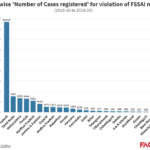Pulsed light is an emerging technology that can serve as an alternative to current antimicrobial interventions in the food industry. The first objective of this study was to define the spectrum and energy characteristics of pulsed light. The second objective was to establish the germicidal response of Escherichia coli, Salmonella enterica subsp. enterica ser. Typhimurium, Listeria monocytogenes, Bacillus cereus (vegetative cells and endospores), Aspergillus niger spores, and Penicillium roqueforti spores were evaluated following pulsed light treatments.
Microorganisms were treated using three different broad-spectrum xenon gas flashlamps. All microorganisms experienced a significant interaction of flashlamp type treatment duration (P < 0.0001). To visualize physical effects on cell structures, transmission electron microscopy (TEM) images were obtained for E. coli following 15 pulse treatments of the three flashlamp types and the type B flashlamp with VIS-NIR filter placement. TEM imaging indicated that damage to cell morphology following treatment by broad-spectrum radiation was negligible. These results indicate that microbial sensitivity to pulsed light treatment differs for species and is predominantly attributed to the ultraviolet portion of the spectrum.
The complete paper on the study conducted by Penn State University is available here.






